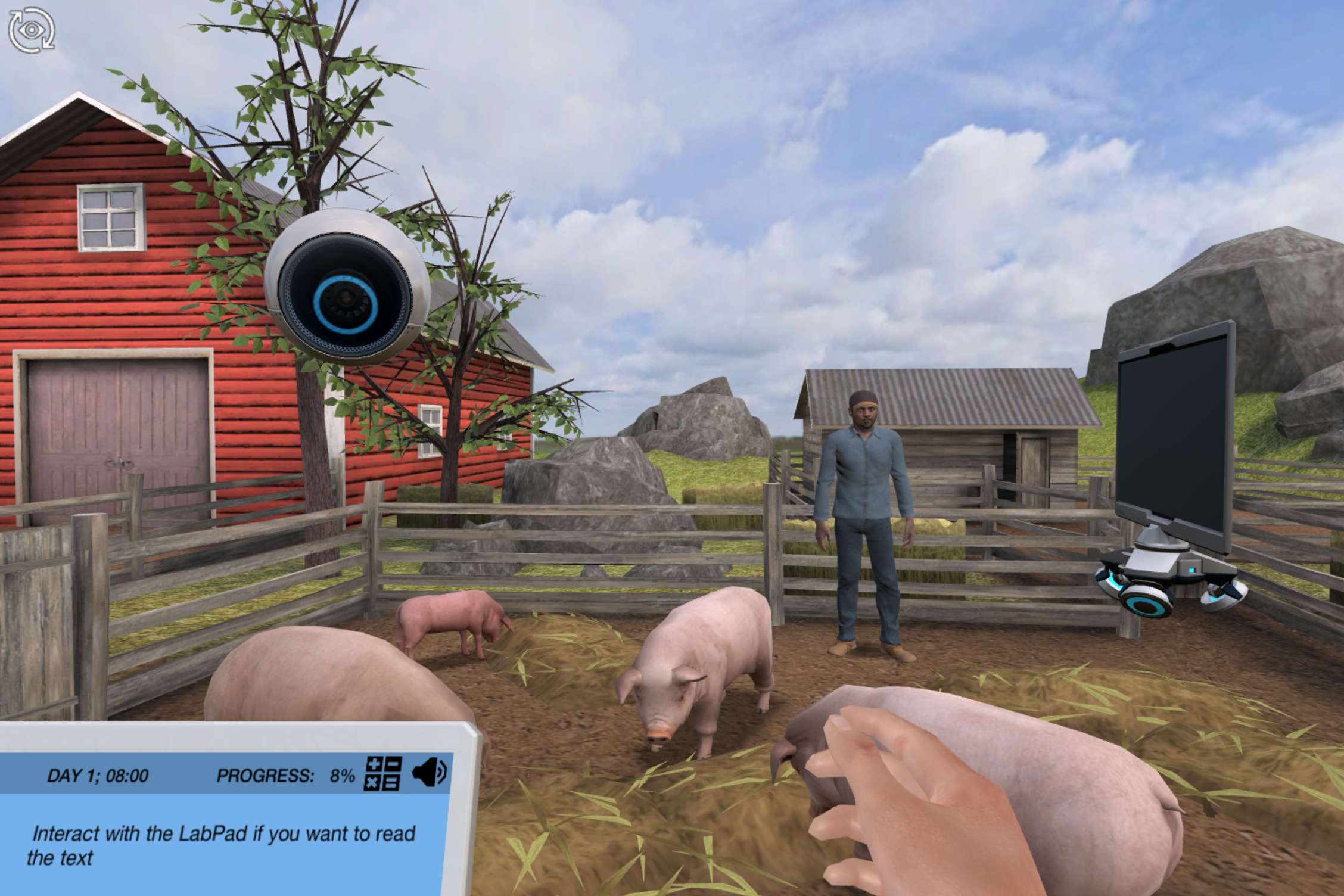Heading 1
Heading 2
Heading 3
Heading 4
Heading 5
Heading 6
Lorem ipsum dolor sit amet, consectetur adipiscing elit, sed do eiusmod tempor incididunt ut labore et dolore magna aliqua. Ut enim ad minim veniam, quis nostrud exercitation ullamco laboris nisi ut aliquip ex ea commodo consequat. Duis aute irure dolor in reprehenderit in voluptate velit esse cillum dolore eu fugiat nulla pariatur.
Block quote
Ordered list
- Item 1
- Item 2
- Item 3
Unordered list
- Item A
- Item B
- Item C
Bold text
Emphasis
Superscript
Subscript
About This Simulation
Help Farmer Greg understand the wider issues affecting corn production. Identify the different reservoirs and how they are connected, and then determine how human emissions affect the cycle by playing with the 3D model.
Learning Objectives
- Model how carbon moves between places in the environment
- Explain the wider impact of changes at any one point in the carbon cycle
- Identify examples of human influence on the carbon cycle
About This Simulation
Lab Techniques
- Importance of the carbon cycle: cellular respiration, photosynthesis, decomposition, combustion
- Carbon is finite
Related Standards
- LS2.B-H3
- HS-LS2-5
- HS-ESS3-3
- ESS3.C-H1
- 4.3 Carbon cycling
Learn More About This Simulation
Carbon is one of the main building blocks of life! In this simulation, you will learn all about the carbon cycle to help Farmer Greg understand the reason behind the corn shortage. He has been informed that it could be due to the effects of global warming from carbon emissions. You will learn about the importance of the carbon cycle and the negative impact of human emissions on the environment so you can help Farmer Greg with his problem. Will you be able to find a sustainable solution to reduce carbon emissions without having to sacrifice the modern lifestyle?
Influences on the Carbon Cycle
Discover the complexity of the carbon cycle with our amazing interactive 2D minigame on our high-tech floating screen. One of the many benefits of learning in a virtual lab, you can take the lab anywhere you want – like a farm!
Understand the importance of the carbon cycle in many life processes, such as photosynthesis and cellular respiration. Use your newfound knowledge of the carbon cycle to investigate the effects of global warming. Too much of anything is usually a bad thing – discover the wider impacts of excessive carbon emissions on the environment and how this can cause cascading effects to food production, wildlife and more.
Reduce human carbon emissions! Use the 3D model to identify how different components, such as forests, factories and cars, influence the carbon in the environment. Assess the effects caused by excessive concentrations of atmospheric carbon, particularly what happens to the ocean. Find different ways of balancing a healthy environment and a modern day lifestyle. Once you have achieved your goal, you can continue playing with the model to find as many solutions for combating global warming as possible, and find out why some solutions just don’t work! A green future At the end of the simulation you will have to inform Farmer Greg of your findings! Do you think you can find the ideal solution for reducing carbon emissions?
For Science Programs Providing a Learning Advantage
Boost STEM Pass Rates
Boost Learning with Fun
75% of students show high engagement and improved grades with Labster
Discover Simulations That Match Your Syllabus
Easily bolster your learning objectives with relevant, interactive content
Place Students in the Shoes of Real Scientists
Practice a lab procedure or visualize theory through narrative-driven scenarios


FAQs
Find answers to frequently asked questions.
Heading 1
Heading 2
Heading 3
Heading 4
Heading 5
Heading 6
Lorem ipsum dolor sit amet, consectetur adipiscing elit, sed do eiusmod tempor incididunt ut labore et dolore magna aliqua. Ut enim ad minim veniam, quis nostrud exercitation ullamco laboris nisi ut aliquip ex ea commodo consequat. Duis aute irure dolor in reprehenderit in voluptate velit esse cillum dolore eu fugiat nulla pariatur.
Block quote
Ordered list
- Item 1
- Item 2
- Item 3
Unordered list
- Item A
- Item B
- Item C
Bold text
Emphasis
Superscript
Subscript
A Labster virtual lab is an interactive, multimedia assignment that students access right from their computers. Many Labster virtual labs prepare students for success in college by introducing foundational knowledge using multimedia visualizations that make it easier to understand complex concepts. Other Labster virtual labs prepare learners for careers in STEM labs by giving them realistic practice on lab techniques and procedures.
Labster’s virtual lab simulations are created by scientists and designed to maximize engagement and interactivity. Unlike watching a video or reading a textbook, Labster virtual labs are interactive. To make progress, students must think critically and solve a real-world problem. We believe that learning by doing makes STEM stick.
Yes, Labster is compatible with all major LMS (Learning Management Systems) including Blackboard, Canvas, D2L, Moodle, and many others. Students can access Labster like any other assignment. If your institution does not choose an LMS integration, students will log into Labster’s Course Manager once they have an account created. Your institution will decide which is the best access method.
Labster is available for purchase by instructors, faculty, and administrators at education institutions. Purchasing our starter package, Labster Explorer, can be done using a credit card if you are located in the USA, Canada, or Mexico. If you are outside of North America or are choosing a higher plan, please speak with a Labster sales representative. Compare plans.
Labster supports a wide range of STEM courses at the high school, college, and university level across fields in biology, chemistry, physics, and health sciences. You can identify topics for your courses by searching our Content Catalog.















